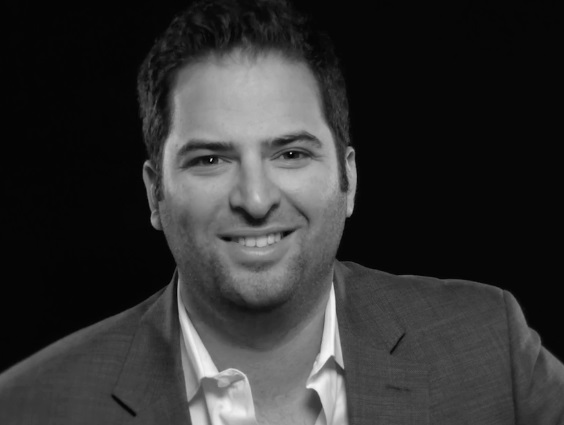Wearables, Connected Devices and IoTs: Where Do Marketers Fit In? -- Sam Zises, Founder and CEO, [L]earned Media
![Cover image for article: Wearables, Connected Devices and IoTs: Where Do Marketers Fit In? -- Sam Zises, Founder and CEO, [L]earned Media](/media/articles/marketing-ID-10019200_fFw2LAe.jpg)
The impact of mobile, connected and wearable devices combined with digital and social media has transformed how people engage with brands and make purchase decisions today. As a result, companies have to adapt how they approach many aspects of their businesses. Brands can now take advantage of new consumer engagement opportunities that are beginning to exist across social media, content marketing and general customer-relationship management tactics.
The interactions linking buyers and brands in more meaningful ways are occurring via a wide range of connected and mobile devices. These may encompass smart watches, smart wristbands, smart glasses, smart home appliances and other smart gear – devices that are commonly known as wearables and the Internet of Things (IoT).
With the proliferation of these technologies and associated platforms come growing consumer expectations that require brands and businesses to take notice and similarly evolve or diminish.
This new landscape has given rise to three key trends, or opportunities:
1) Transitory Content
Transitory content is content that can be consumed in transit: on-the-go, in-store and out-of-home. Given its consumption environment (the context in which it is being consumed), this content must vary from traditional content meant to be consumed in-home, at work and primarily on your desktop or from the comfort of your couch. This content should be snack-sized (micro), non linear (on-demand), episodic (plot relying on an independent stand-alone format) and portable (can be transitioned seamlessly from device to device).
2. Utilitarian Content
There is a massive amount of user-generated content, media and publisher content on the mobile Internet. For brand content to maintain a shelf life beyond our ever-shortening attention spans, it must provide utility for the end user. Utilitarian content can provide consumers with financial benefits, save time or improve quality of life. Think about it as "functional" over "emotional."
3. Post-Transactional Relationship
Increasing data points and data access via consumers' wearables and the IoT, often unknowingly, provide a unique opportunity for marketers to take customer relationships to the next level.
Brands can now interact with consumers on a customized, individualized and personalized level throughout the buying process. This will enable brands to build more profitable and longer-lasting relationships over time, and further cement themselves as the preferred brand in a particular category.
Several systems are already at play to augment and facilitate greater functionality relative to wearables and IoTs, and further advance the trends and opportunities outlined above.
From low-energy Bluetooth beacons and near-field communications (NFC) to virtual reality, you may already be familiar with some options. If you've used Apple Pay on your new iPhone 6, skipped lines at the airport by checking in with your mobile boarding pass, set an alert on your Nest thermostat or played the latest first-person shooter game with an Oculus Rift headset, you know what I mean. You've already begun experiencing the benefits.
These systems will continue to evolve, and ultimately new ones will surface to play a major role in the expanding marketing environment of connected devices, wearables and the IoT. Given the excitement and opportunities that exist around the space as a whole, we'll continue to research the impact of this new age of buyer behavior and watch how new technologies are unfolding, how brands are successfully leveraging them to grow, and what businesses can learn to inform their own marketing agendas.
To learn more about The New Age of Buyer Behavior visit SchoolingBrands.com.
Sam Zises is the Founder and CEO of [L]earned Media, a Silicon Alley-based marketing agency schooling brands in the new age of buyer behavior. Before [L]earned Media, Sam founded the social planning tech startup Wendr, which was featured by Mashable two weeks after its launch as “The #1 App for Planning Your Perfect Night.” Prior to Wendr, he managed marketing and business development at Ogilvy & Mather’s industry leading entertainment marketing arm, OgilvyEntertainment.
schooling brands in the new age of buyer behavior. Before [L]earned Media, Sam founded the social planning tech startup Wendr, which was featured by Mashable two weeks after its launch as “The #1 App for Planning Your Perfect Night.” Prior to Wendr, he managed marketing and business development at Ogilvy & Mather’s industry leading entertainment marketing arm, OgilvyEntertainment.
Check us out on Facebook at MediaBizBloggers.com
Follow our Twitter updates at @MediaBizBlogger
The opinions and points of view expressed in this commentary are exclusively the views of the author and do not necessarily represent the views of MediaBizBloggers.com management or associated bloggers. MediaBizBloggers is an open thought leadership platform and readers may share their comments and opinions in response to all commentaries.
Image at top courtesy of freedigitalphotos.net


